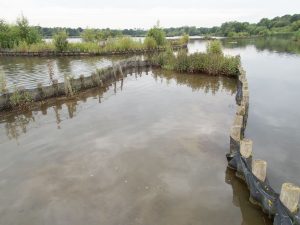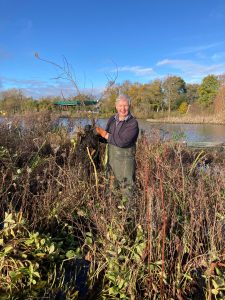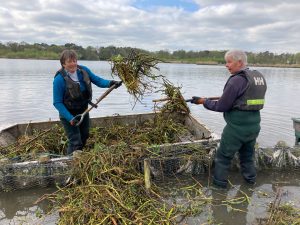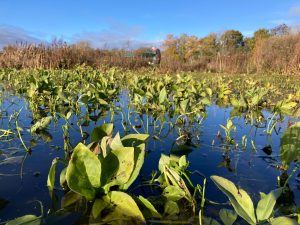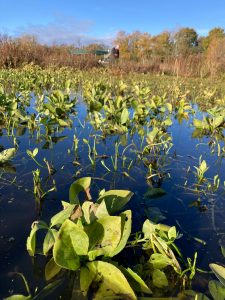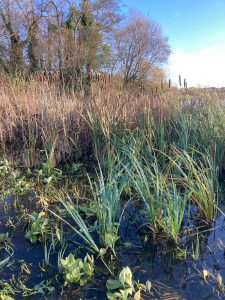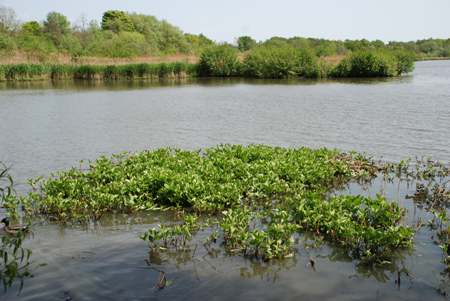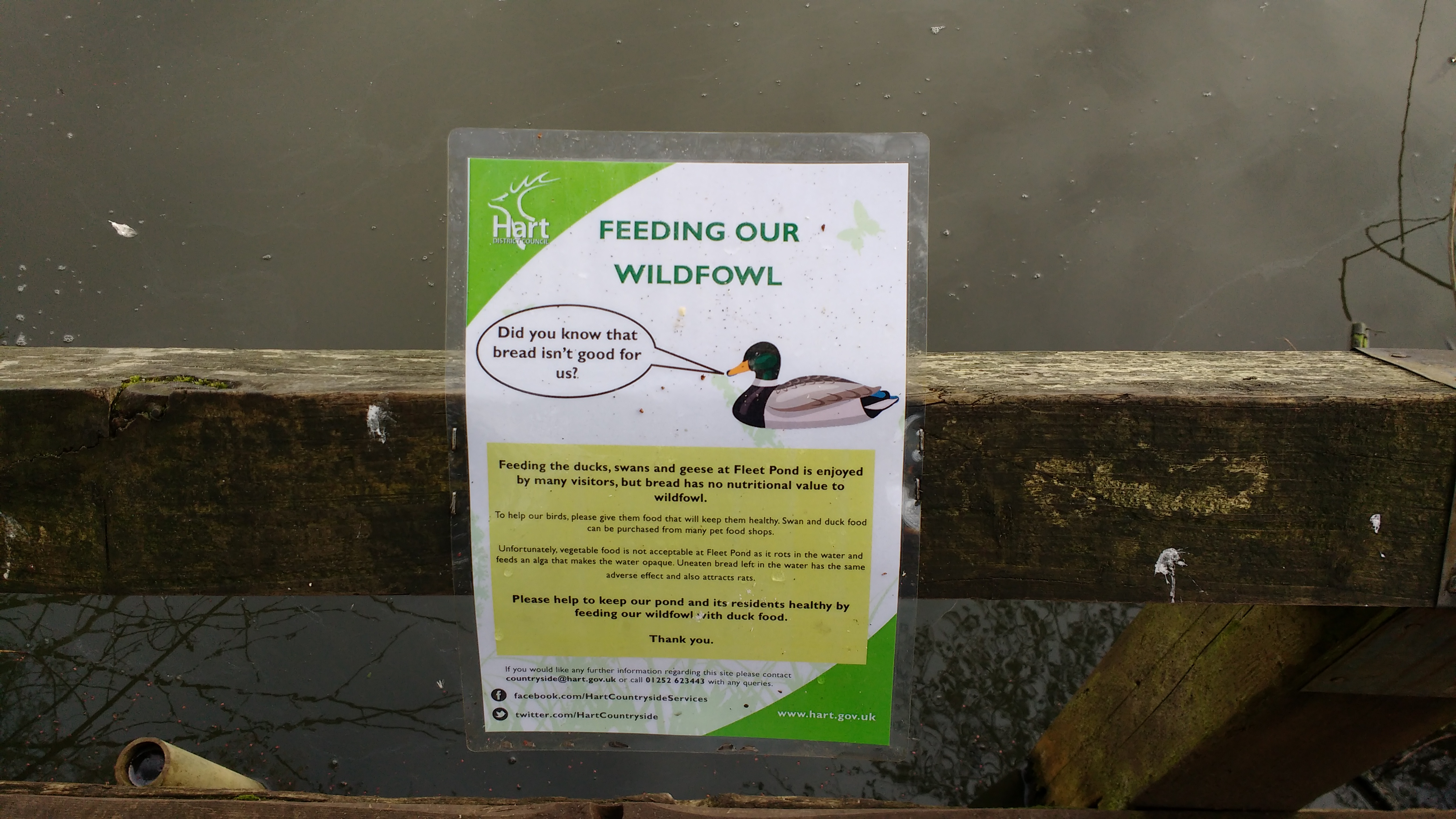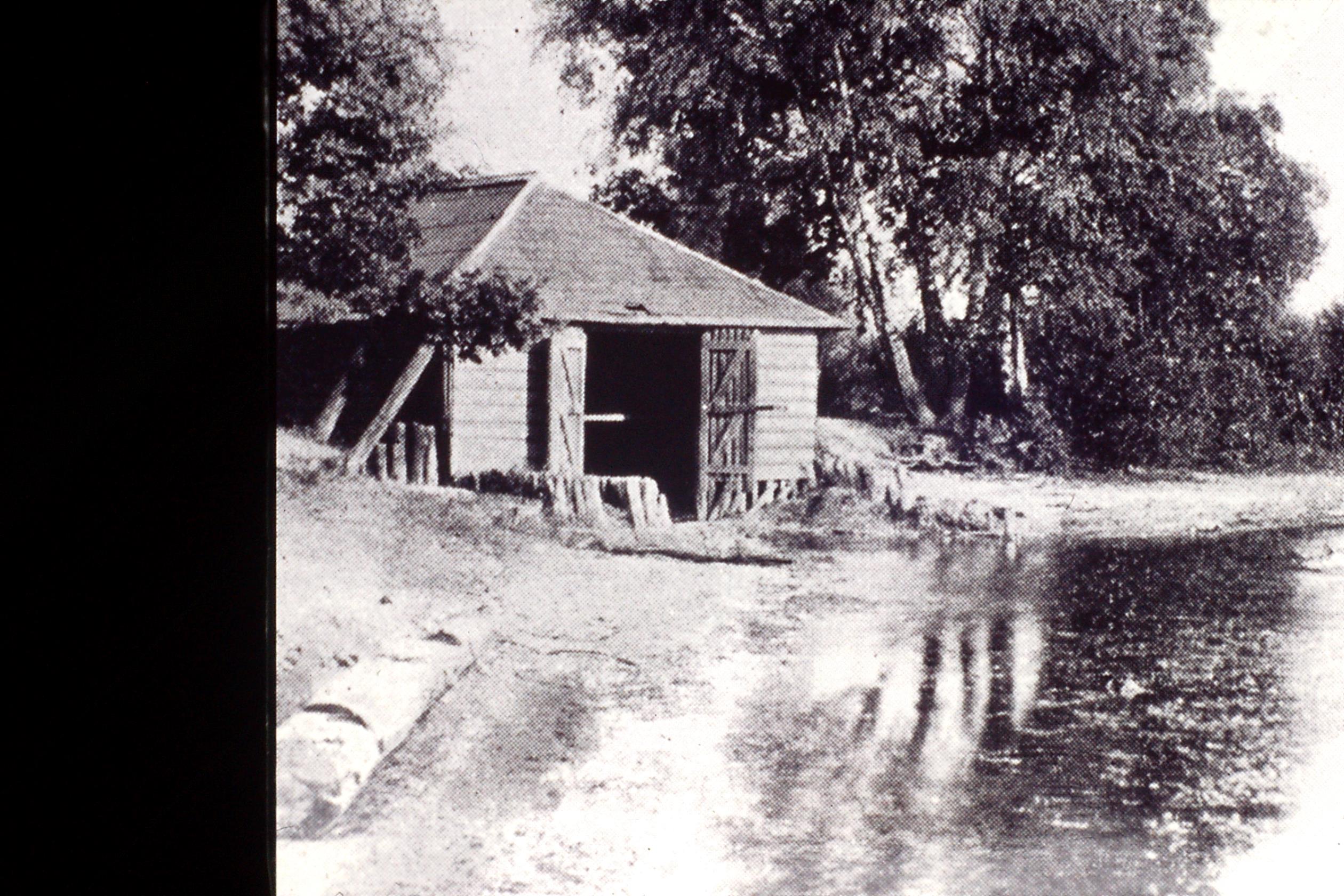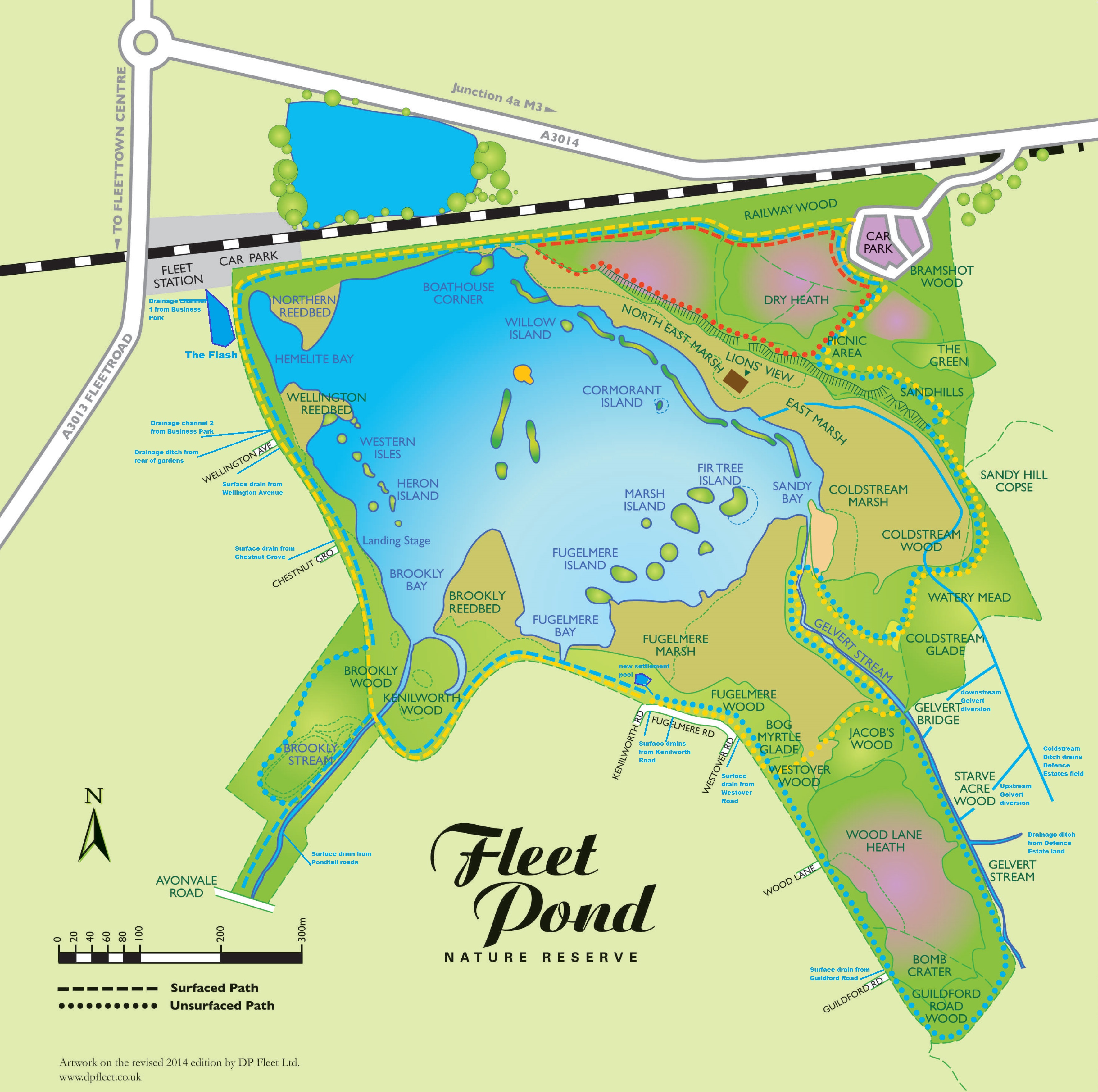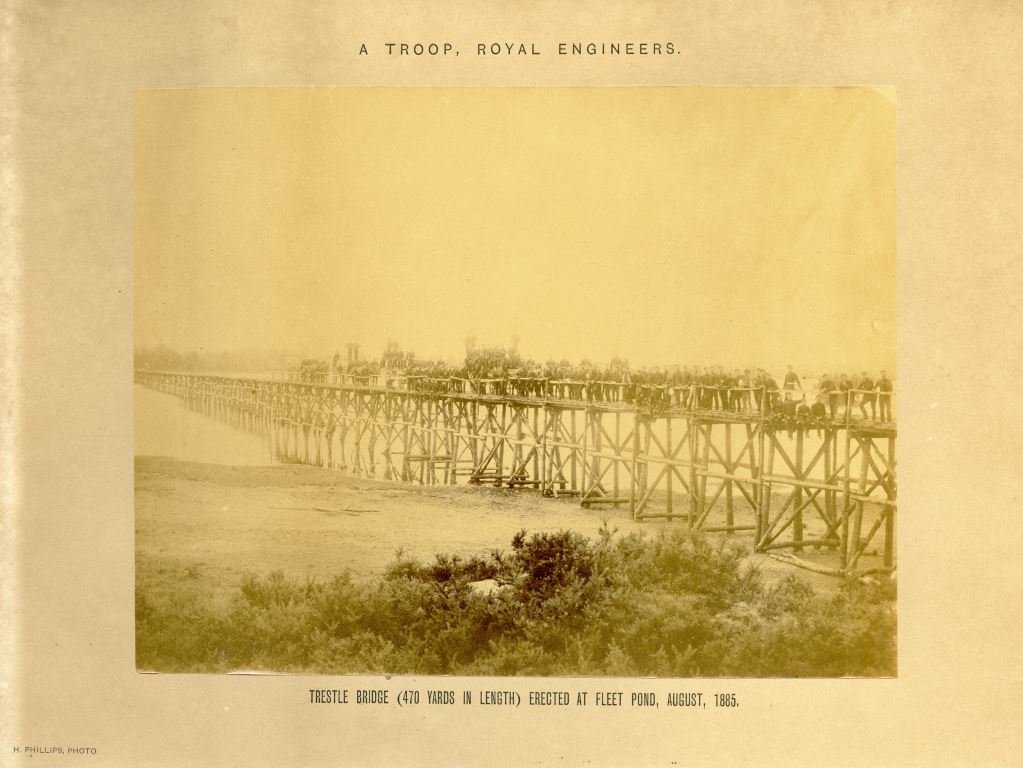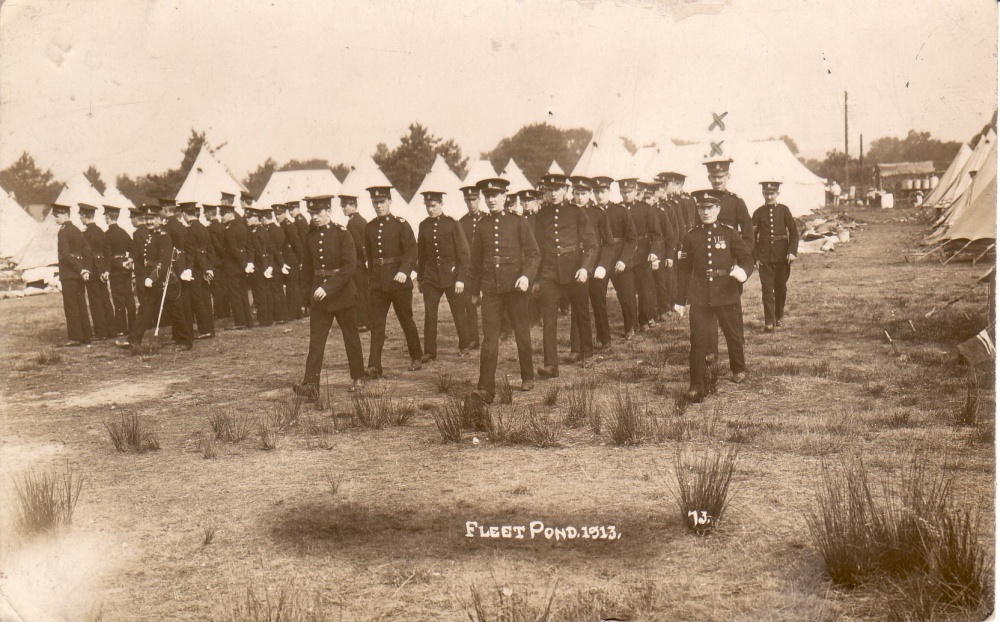When Fleet Pond was dredged in 2012 the silt was used to create islands around the lake. The idea of these islands was that they would become reedbeds, which help to improve water quality and are fantastic habitats for a variety of wildlife, especially birds.
Reedbed growth did not happen on all the islands. Geese and other waterfowl accessed where they could and grazed on all the young shoots coming through. This resulted in several barren islands, with scrub rather than reedbed growing, as pictured below.
The Fleet Pond Society Island team came up with a rationale to encourage native aquatic and marginal species, that it was necessary to protect new growth from geese and other waterfowls. The FPS Island team’s rescue plan was to plant Bogbean.
The team’s experience was that Bogbean, a native species found in many areas around Fleet Pond, provides a protective ‘buffer zone’ for the target species of plants to grow. Geese are reluctant to enter dense beds of Bogbean. The team has used this technique in several other areas around the Pond where reedbeds have been in decline due to grazing.
Firstly, any Willow and Alder scrub growth had to be removed from the island, as shown below.
Bogbean was then harvested from Hemelite Bay and transferred out to the islands by boat. The rhizomes were spread across the islands.
The team was delighted that the Bogbean took, and recent photos (below) show how the plant has become well established in beds on several islands.
In places Reed and Reedmace are now growing amongst Bogbean (pictured below), showing that the Bogbean has been a successful ‘buffer zone’ against geese and other wildlfowl.
Picture credits – John Sutton

